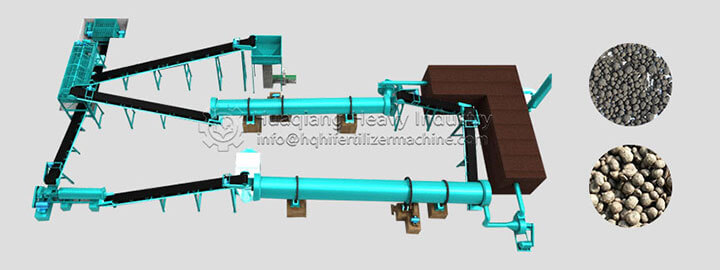In the wave of green agricultural development, bio-organic fertilizer equipment is a core tool for realizing waste resource utilization and improving fertilizer quality. Choosing the right equipment requires comprehensive consideration of multiple factors to ensure efficient, stable, and demand-compliant production.

First, the matching of production scale and capacity is paramount. For small family farms or startups, small crushers and simple compost turners with an annual output of tens of thousands of tons are sufficient, avoiding equipment idleness and waste. For large fertilizer manufacturers, when building a complete bio-organic fertilizer production line, fully automated granulation lines and continuous dryers with an annual output of hundreds of thousands of tons are more suitable, ensuring efficient mass production. Blindly pursuing "large equipment" or choosing equipment that is "too small for the job" will affect the production rhythm.
Second, the compatibility with raw material characteristics cannot be ignored. Bio-organic fertilizer raw materials are diverse, such as livestock and poultry manure, straw, and mushroom residue, with significant differences in moisture content, hardness, and fiber content. For example, when processing high-moisture livestock and poultry manure, pretreatment equipment with dehydration functions should be prioritized; for processing fiber-rich straw, a hammer mill with strong crushing power should be selected. If the equipment is incompatible with the characteristics of the raw materials, problems such as clogging and incomplete crushing can easily occur, affecting the quality of subsequent fermentation and granulation.
Furthermore, a careful balance between cost budget and cost-effectiveness is crucial. Equipment purchase cost is only one aspect; long-term expenses such as operating energy consumption and replacement costs for easily worn parts must also be considered. While some low-priced equipment may have low initial investment, high energy consumption and easily worn parts can lead to higher total costs in the long run. Conversely, while expensive imported equipment may have stable performance, long maintenance cycles and high spare parts costs can also increase the burden. A cost-effective option should be chosen based on one's budget, prioritizing low energy consumption, low failure rate, and readily available spare parts.
Finally, after-sales service and technical support are essential. Bio-organic fertilizer equipment may experience malfunctions during operation, such as wear and tear on the granulator mold or temperature control failure in the dryer. Reputable manufacturers will provide timely on-site repair services, ample spare parts supply, and technical guidance on equipment debugging and production process optimization. Choosing a brand with inadequate after-sales service may lead to a "work stoppage awaiting repair" situation when equipment malfunctions, resulting in economic losses.
In short, selecting bio-organic fertilizer equipment requires considering actual production needs and comprehensively weighing factors such as capacity, raw material compatibility, cost, and after-sales service to choose the right equipment and ensure smooth bio-organic fertilizer production.